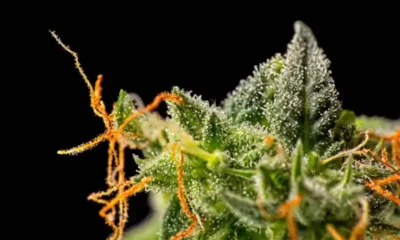Connect with us
Published
1 year agoon

As states across the U.S. see dips in cannabis sales, it looks like our neighbor to the north is still going strong. Canadian cannabis consumers spent CA$4.52 billion, or $3.35 billion USD, on regulated recreational products throughout 2022, marking 17.9% growth over 2021’s total sales (CA$3.83 billion), according to retail sales data from Statistics Canada as reported by MJBizDaily.
It’s perhaps not a surprising change, given the overall increase in Canada’s licensed cannabis stores.
Following month-over-month declines in October and November, Canada also hit a record in monthly recreational sales for December 2022, reaching CA$425.9 million that month. From November’s revised total of CA$374.3 million, sales increased month-over-month by 13.8%. Even when adjusting for December’s additional day versus November, it was still a 10.1% month-over-month increase.
Manitoba was the leader when it came to monthly sales growth, with sales in the province increasing by 21.7% from November to December. In every other province, sales also grew on a monthly basis, though Statistics Canada did not present sales figures for the Northwest Territories and Nunavut.
While the record-breaking December sales seems to indicate strong trends for the future, it’s likely in part due to the holiday surge and demand for cannabis, according to Michael Armstrong, an associate business professor at Brock University in St. Catharine’s, Ontario who also studies the cannabis market. Because of the
Speaking with MJBizDaily, Armstrong indicated that Canadian sales are indeed beginning to slow. The late-2022 boost likely means that January will see a dip, Armstrong said; January sales data will be released on March 21.
He also shared that cannabis sales trends often track closely with the number of retail outlets and that 2022’s growth is “to a large extent” because of the increase in stores.
Ontario is Canada’s most populous province and has the largest cannabis market in the country. In turn, it also saw a greater increase in new stores, with other provinces failing to keep the same pace. According to the report, Canada is home to approximately 3,700 cannabis stores and retail licenses, and nearly 1,700 of them are in Ontario alone.
Armstrong explained that overall, the store count in Canada has stagnated, and some kind of change will be needed for future growth to persist. This could mean major cities that have yet to embrace cannabis introducing retail stores or a bump in consumption lounges across the country. Though Armstrong warned that without some of these larger changes, market growth will likely be slower and more gradual, “nothing like what we have seen prior to this year,” he said.
Similar to the qualms of some U.S. states, Canadian cannabis business owners are also facing their share of struggles as the industry continues to find its footing. Earlier this month, five Canadian cannabis sector CEOs joined a press conference organized by the Cannabis Council of Canada to discuss layoffs and facility closures, arguing that high tax rates and strict rules have made it difficult for their businesses to survive, CTV News reports.
“You’re hearing from producers here today because we as growers and manufacturers sit at the heart of the cannabis supply chain,” said Mandesh Dosanjh, president and CEO of British Columbia company Pure Sunfarms. “We need to be healthy in order for the whole system to thrive but that’s not reality. Producers stand here in peril. Canadian cannabis is in peril.”
During the press conference, the CEOS said that high excise tax rates have been a major challenge, namely that the 2.3% excise tax rate has become too costly, especially when taking increased inflation rates into account. The growing disparities between the legal cannabis sector, the illegal market and the alcohol and tobacco industries are also a factor, alongside strict rules regarding THC content.
The limitations have ultimately left investors and business owners taking the hit, while non-regulated stores are able to profit without having to abide by the same rules.
Regarding the year ahead and sales figures we can expect in the future, Armstrong indicated that numbers are typically slower to start, though things will begin to “recover” in March.


Despite City Efforts, Hemp Shops Posing as Dispensaries Prevail in Las Vegas


Cannabis Community, Investors React to DEA Decision To Reschedule


Georgia Governor Signs Bill Establishing Licensing Requirements To Grow Hemp


Study: Psilocybin Enhances Meditation


Ohio GOP Lawmakers Debate Adult-Use MJ Priorities, Eye June for Regulation Approval


Taylor Swift Puts Narcotics Into All of Her Songs on ‘The Tortured Poets Department’
